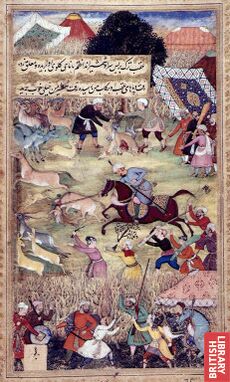غلزائي
| Ghilji | |
|---|---|
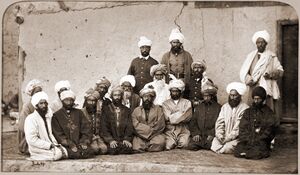 Ghilji chieftains in Kabul (c. 1880) | |
| العرقية | Pashtun |
| الموقع | Afghanistan, Pakistan |
| الفروع | Ahmadzai, Akakhel, Andar, Hotak, Ibrahimkhel, Ibrahimzai, Kharoti, Lodi, Nasar, Stanikzai, Sakzai, Sulaimankhel, Tarakai, Tokhi |
| اللغة | Pashto |
| الديانة | |
Ghiljī (Pashto: غلجي, تـُنطق [ɣəlˈd͡ʒi][أ]; فارسية: خیلجی) كما تُكتَب Khilji ؛ Khalji, أو Ghilzai أو Ghilzay (غلزی)
غلزائي أو غلجائي هو اسم قبيلة بشتونية كبيرة، مركزها هو جنوب غرب أفغانستان، بين قندهار وغزنة، وتمتد مناطقها إلى الشرق نحو سلسلة جبال سليمان داخل باكستان. يدين معظم أهل القبيلة بالإسلام على المذهب السني وعلى منهج أبي حنيفة النعمان.
Khilji dynasty was a dynasty in Delhi Sultanate founded by Jalaluddin Khalji and expanded by Alauddin Khalji who were from Ghilji tribe.[1][2] The modern nomadic Kochi people are predominantly made up of Ghilji tribes.[3] The Ghilji make up around 20-25% of Afghanistan's total population.[4]
They mostly speak the central dialect of Pashto with transitional features between the southern and northern varieties of Pashto.
أصل الاسم
According to historian C.E. Bosworth, the tribal name "Ghilji" is derived from the name of the Khalaj (خلج) tribe.[5] According to historian V. Minorsky, the ancient Turkic form of the name was Qalaj (or Qalach), but the Turkic /q/ changed to /kh/ in Arabic sources (Qalaj > Khalaj). Minorsky added: "Qalaj could have a parallel form *Ghalaj."[6] The word finally yielded Ghəljī and Ghəlzay in Pashto.
According to a popular folk etymology, the name Ghəljī or Ghəlzay is derived from Gharzay (غرزی; ghar means "mountain" while -zay means "descendant of"), a Pashto name meaning "born of mountain" or "hill people."[7]
الأصل
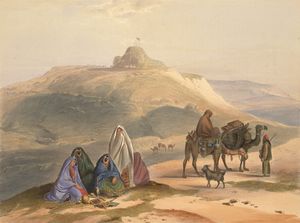
التاريخ
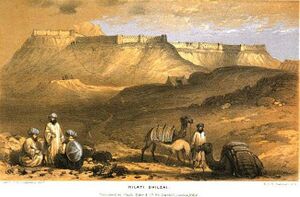
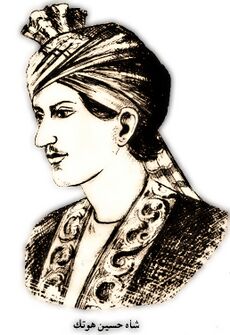
The Khalaj in medieval Islamic period
Medieval Muslim scholars, including 9th-10th century geographers Ibn Khordadbeh and Istakhri, narrated that the Khalaj were one of the earliest tribes to have crossed the Amu Darya from Central Asia and settled in parts of present-day Afghanistan, especially in the Ghazni, Qalati Ghilji (also known as Qalati Khalji), and Zabulistan regions. Mid-10th-century book Hudud al-'Alam described the Khalaj as sheep-grazing nomads in Ghazni and the surrounding districts, who had a habit of wandering through seasonal pastures.
Contemporary period
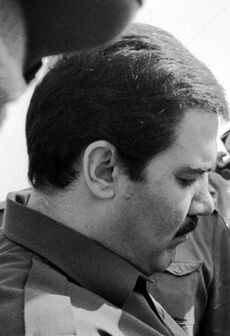
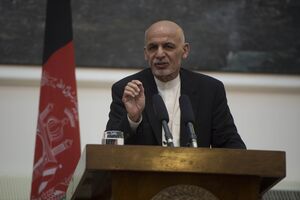
More recently, the former Presidents of Afghanistan Ashraf Ghani Ahmadzai (2014–2021) and Mohammad Najibullah Ahmadzai (1987–1992) belonged to the Ahmadzai branch of the Ghilji tribe.
Two other former Presidents of Afghanistan, Nur Muhammad Taraki (1978–1979) and Hafizullah Amin (1979), belonged to the Tarakai and Kharoti branches of the Ghilji tribe, respectively.[8]
Areas of settlement
In Afghanistan, the Ghilji are primarily concentrated in an area which is bordered in the southeast by the Durand Line, in the northwest by a line stretching from Kandahar via Ghazni to Kabul, and in the northeast by Jalalabad. Large numbers were forced to migrate to northern Afghanistan after the rebellion of 1886.[8]
Before the 1947 partition of India, some Ghilji used to seasonally winter as nomadic merchants in India, buying goods there, and transporting them by camel caravan in summer for sale or barter in Afghanistan.[9]
Pashto dialect
The Ghilji of the central region speak Central Pashto, a dialect with unique phonetic features, transitional between the southern and the northern dialects of Pashto.[10]
| Dialects[11] | ښ | ږ |
|---|---|---|
| Central (Ghazni) | [ç] | [ʝ] |
| Southern (Kandahar) | [ʂ] | [ʐ] |
| Northern (Kabul) | [x] | [ɡ] |
Subtribes
- Ahmadzai
- Akakhel
- Alikhel
- Andar
- Hotak
- Hussainkhel
- Ibrahimkhel
- Ibrahimzai
- Kharoti
- Lodi
- Nasar
- Painda Khel
- Stanikzai
- Sakzai
- Sulaimankhel
- Tarakai
- Tokhi
See also
Notes
- ^ In Pashto, "Ghilji" (غلجي, [ɣəlˈd͡ʒi]) is the plural form of the word. Its masculine singular is "Ghiljay" (غلجی, [ɣəlˈd͡ʒay]), while its feminine singular is "Ghiljey" (غلجۍ, [ɣəlˈd͡ʒəy]).
<ref> ذو الاسم "different_names" المُعرّف في <references> غير مستخدم في النص السابق.المراجع
- ^ Frye, R.N. (1999). "GHALZAY". Encyclopaedia of Islam (CD-ROM Edition v. 1.0 ed.). Leiden, The Netherlands: Koninklijke Brill NV.
- ^ Lee, Jonathan (12 November 2018). Afghanistan, A History From 1260 To The Present Day. New Zealand: Reaktion Books. p. 52. ISBN 9781789140101.
- ^ "Khaljies are Afghan". Abdul Hai Habibi. alamahabibi.com. Retrieved 19 August 2012.
- ^ "Ghilzai Tribe". www.afghan-bios.info. September 2021.
- ^ Pierre Oberling (15 December 2010). "ḴALAJ i. TRIBE". Encyclopaedia Iranica. Retrieved 4 July 2020.
Indeed, it seems very likely that [the Khalaj] formed the core of the Pashto-speaking Ghilji tribe, the name [Ghilji] being derived from Khalaj.
- ^ The Khalaj West of the Oxus, by V. Minorsky: Khyber.ORG. Archived يونيو 13, 2011 at the Wayback Machine; excerpts from "The Turkish Dialect of the Khalaj", Bulletin of the School of Oriental Studies, University of London, Vol 10, No 2, pp 417-437 (retrieved 10 January 2007).
- ^ Morgenstierne, G. (1999). "AFGHĀN". Encyclopaedia of Islam (CD-ROM Edition v. 1.0 ed.). Leiden, The Netherlands: Koninklijke Brill NV.
- ^ أ ب "ḠILZĪ" - Encyclopaedia Iranica, December 15, 2001 (M. Jamil Hanifi)
- ^ "Ghilzay". Encyclopædia Britannica. Retrieved 4 June 2020.
- ^ Coyle, Dennis Walter (August 2014). "Placing Wardak among Pashto varieties" (PDF). University of North Dakota:UND. Retrieved 26 December 2014.
- ^ Hallberg, Daniel G. 1992. Pashto, Waneci, Ormuri. Sociolinguistic Survey of Northern Pakistan, 4.
- ^ Peter Gottschalk (27 October 2005). Beyond Hindu and Muslim: Multiple Identity in Narratives from Village India. Oxford University Press. p. 99. ISBN 978-0-19-976052-7.
- ^ Heramb Chaturvedi (2016). Allahabad School of History 1915-1955. Prabhat. p. 222. ISBN 978-81-8430-346-9.
- Articles containing Pashto-language text
- Short description is different from Wikidata
- Pages using Lang-xx templates
- Articles containing فارسية-language text
- Articles with hatnote templates targeting a nonexistent page
- Ghilji Pashtun tribes
- Pashto-language surnames
- Modern nomads
- Afghan people
- Turkic people
- علاء الدين خلجي
- قبائل بشتونية
